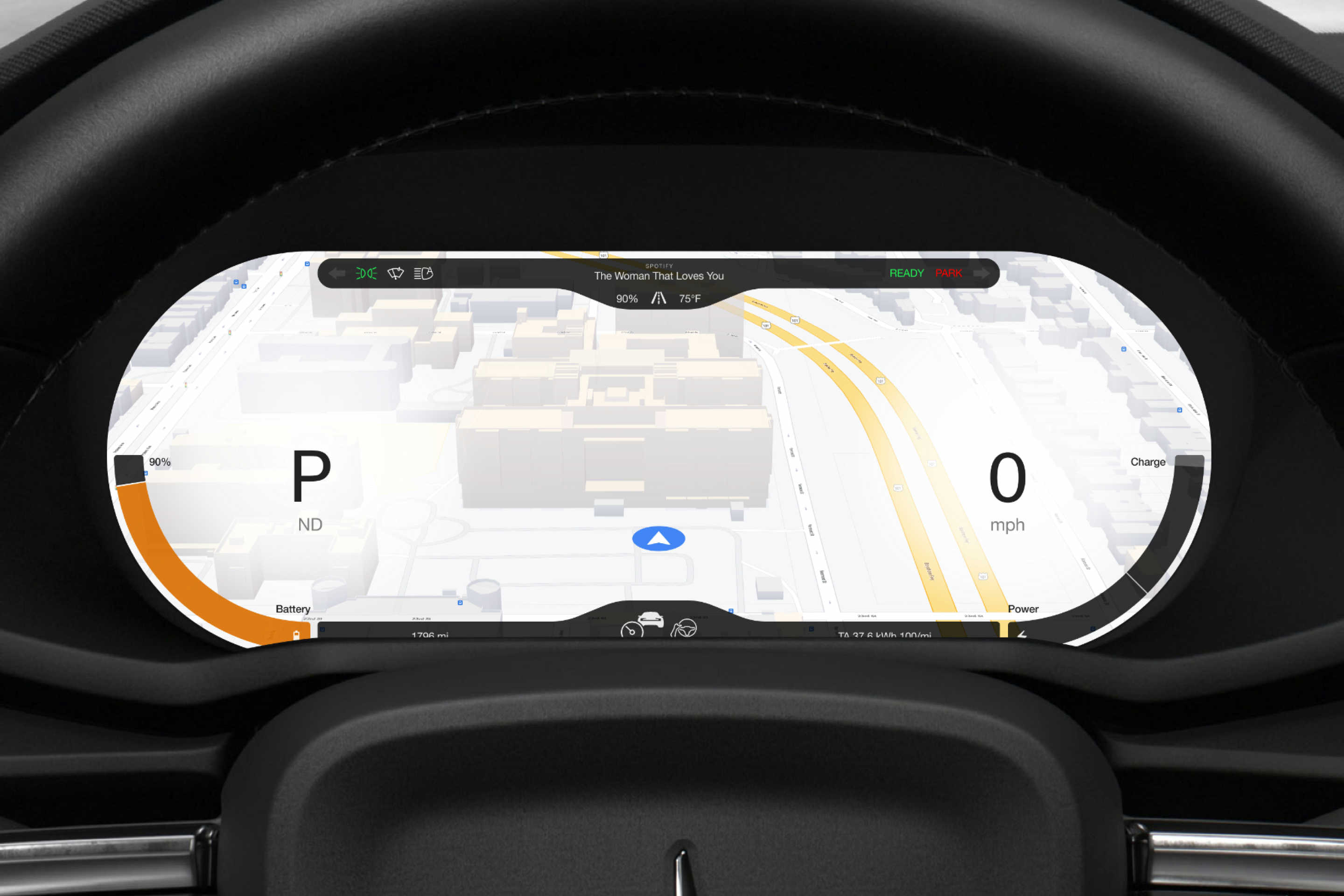Polestar? Who’s Polestar?
The Polestar brand was born from the desire to explore how racing technology could be applied to the performance of Volvo street cars. For all roads and conditions of everyday life. The successful initiative, along with the owners (Volvo and Geely) plans to meet new market demands, rendered in the establishment of Polestar as an independent brand that design, develop and build world-leading electrical high performance drives.
— Stockholm Design Lab

If you’re a car guy/gal like me, you may have heard of them before. I love Volvos, and I’m about to get my 2nd one. But what really drew me to Polestar other than the Thor’s hammer headlights is that there only a handful of performance-oriented BEV out there (Porsche Taycan is one). But enough about that. Why did I really redesign their instrument panel?
”What song was that?!”
I don’t know about you, but I like listening to music when I’m driving, be it on a short trip to the grocery store, or a long commute to work. So naturally, I open the Spotify app on my car, select a random playlist that plays all sort of music from different genre. Then while you’re driving, there’s this just one song that really caught your attention, and now you have to ask yourself, “What song was that?!“. Catch my drift here? Sure, I can just look in the middle screen, and fiddle with the touch screen to open the Spotify app, but that is DANGEROUS. You don’t want to be doing that and must be focusing on driving. That is my biggest motivation on redesigning the instrument panel—make it safer to drive for music lovers like me.
The design process
I normally would do a more traditional d.School approach to solving a design problem, but since I am the user, I already empathized (to myself LOL) with situations where I don’t want to be messing with the center touchscreen while I am driving. I still did some ideations, prototyping, and testing to make sure that my assumptions were validated.

Road to final product
Conducting user tests can be a crucial step in the development process of an idea or a product. By engaging with potential users and gathering their feedback, I was able to gain valuable insights into our needs, preferences, and pain points. This feedback allowed me to iterate and improve upon the initial concept. The feedback I received was mostly positive, and it helped me refine and establish my idea that it is not too far off the current UI.

Visual elements such as colors, typography, and overall aesthetics can convey a brand’s identity and values. By incorporating these elements into the design more effectively, I created a much more cohesive and consistent brand experience. It’s important to consider how our design choices resonate with the existing brand identity. By analyzing Polestar’s brand guidelines meticulously, I was able to identify the design language, key features, and visual cues that defined the brand. Incorporating these elements into the final design helped establish a strong brand connection and fosters brand recognition and loyalty, which led me to this final design:
Creating a working prototype was an important milestone because it allowed me to validate and convey my idea further and test its feasibility. It provided a tangible representation of the concept, enabled me to gather more focused feedback from users and stakeholders. This iterative process of gathering feedback, refining the concept, and building a prototype helped me move closer to a finalized product that meets user needs and expectations. Here’s a demonstration on how it transitions when a user changes the display mode.
When developing a product, it’s crucial to ensure that the design aligns with the brand’s values, target audience, and market positioning. This consistency creates a unified brand experience and strengthens the overall brand perception. By leveraging the visual cues from the current UI of the Polestar 2’s instrument panel, I made sure that the design not only matches the brand but also resonates with the intended users and effectively communicates the brand’s identity. Here are some images as well along with some of Polestar 2’s product images showcase how the new design matches Polestar’s brand.
What’s next?
Well, as much as I love the car and the brand, they tend to go too minimalists not only with their BEV, but as well with their native iOS and Android apps so I will probably redesign those as well. Stay tuned. 😎
